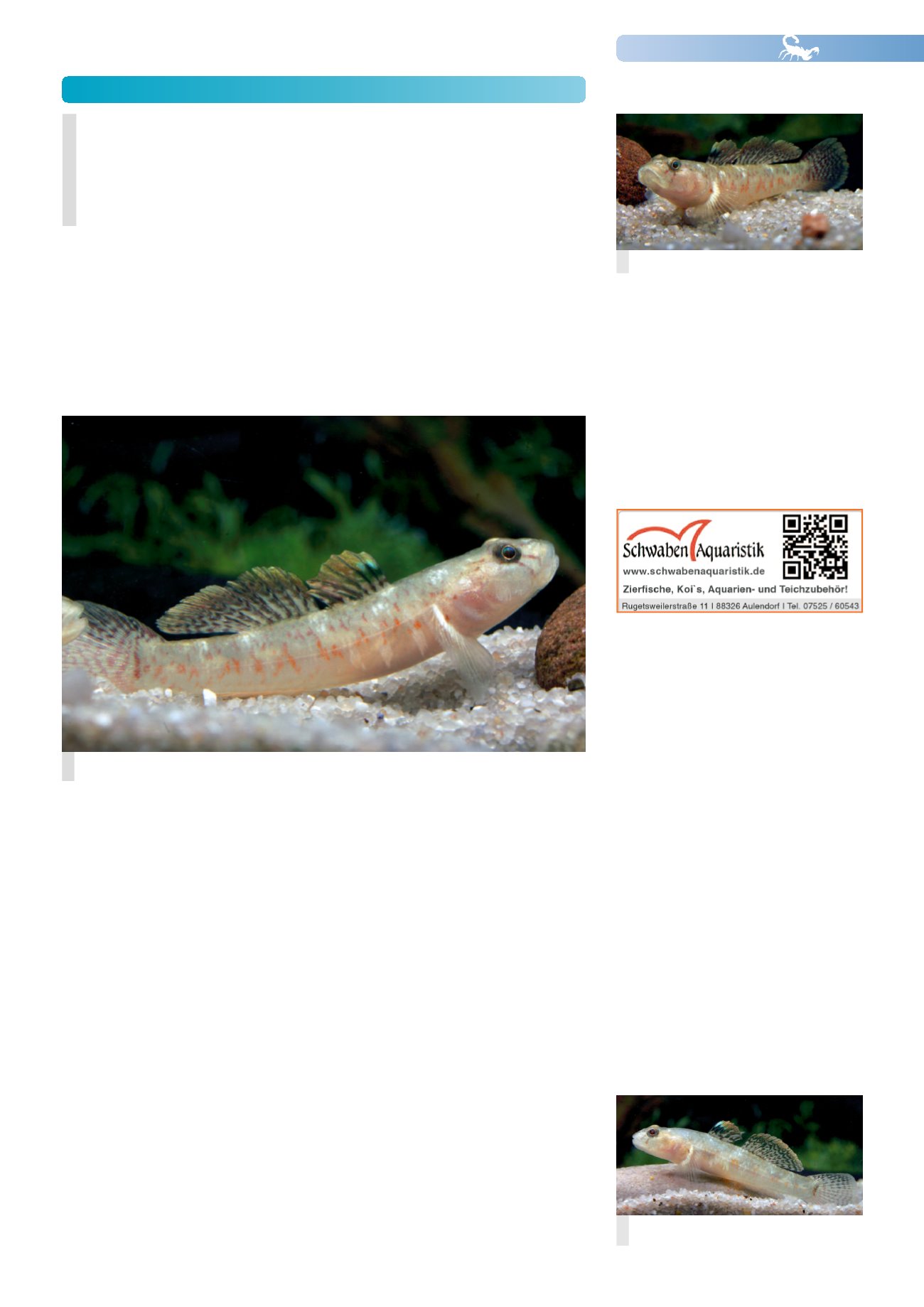
NEWS112
11
Given thehugenumber of fish species inexistence - some32,700 species
arecurrentlyknown toscience,halfof them from freshwater - thenumber
kept in the aquarium at least now and then is very small. In fact only
around 400 species of freshwater fishes are permanently available in the
trade. So it isn't surprising that new species are constantly being
discovered. Some recent new imports by Aquarium Glaser are briefly
portrayedon the followingpages.
Fromall over theworld:
Recent imports
byRomanNeunkirchen
New freshwater imports
Rhinogobiusrubromaculatus
Where the aquarium hobby is concerned
we are only just beginning to discover the
little freshwater gobies of the genus
Rhinogobius
. On this occasion science is
somewhat aheadof us,as 116 specieshave
been described in the genus, 105 of them
currently regarded as valid. The characters
used todistinguish thespeciesare,however
often impossible to determine in live
specimens; that doesn't mean, of course,
that the various species all look the same,
but instead signifies that precise
determination of the species is virtually
impossible inmany cases,plus as a rule the
collecting locality for importedspecimens is
unknown.
AquariumGlaser has recentlymanaged to
import agorgeous
Rhinogobius
,onlya little
more than 4 cm long, via Honking; it was
labeled "Rhinogobius chrysanthemum", a
name that doesn't actually exist in science
and is pure invention by the trade. The
speciesmost closely resembles
Rhinogobius
rubromaculatus,
andsowewillprovisionally
use thatname for it.
Itsmaintenance issimilar to thatof thewell-
known species
Rhinogobius duospilus (
also
known under the synonym
R. wui
). It is a
stream-dweller that requires an aquarium
with a sandy bottom scattered with large
pebbles. These pebbles will be partially
underminedby themales and used as the
centers of their territories. For this reason
there should also be a number of flat,
roughly hand-sized stones, which are
particularlywell suited to thisuse.
Thewater temperature shouldbebetween
16and26 °C,and seasonal variation (cooler
temperature inwinter,warmer insummer) is
very beneficial to the fishes' health.Water
chemistry is of secondary importance and
tap water will normally be suitable for
maintenanceandprobably forbreeding
Because they are sub-tropical these gobies
alsoexperiencedifferentperiodsofdaylight
intheirnaturalhabitat.Theybreedwhenthe
days grow longer. Male and female differ
mainly intheshapeofthehead-maleshave
considerably plumper cheeks than female
conspecifics.
Rhinogobius
includes species that lay very
large numbers of eggs and whose tiny
larvaedevelop inthesea,andothersthat lay
relatively few eggs which hatch into
comparatively large young that remain
permanently
in
fresh
water.
R.
rubromaculatus
belongs to the lattergroup.
Because these little gobies live entirely on
the bottom, the aquarium should have a
minimum size of around 60 x 30 x 30 cm.
Sucha tank,populatedby10-12gobies,will
provide numerous opportunities for
interestingobservations.
Rhinogobiuscf. rubromaculatus,
displayingmale. all photos:FrankSchäfer
Male
Female


